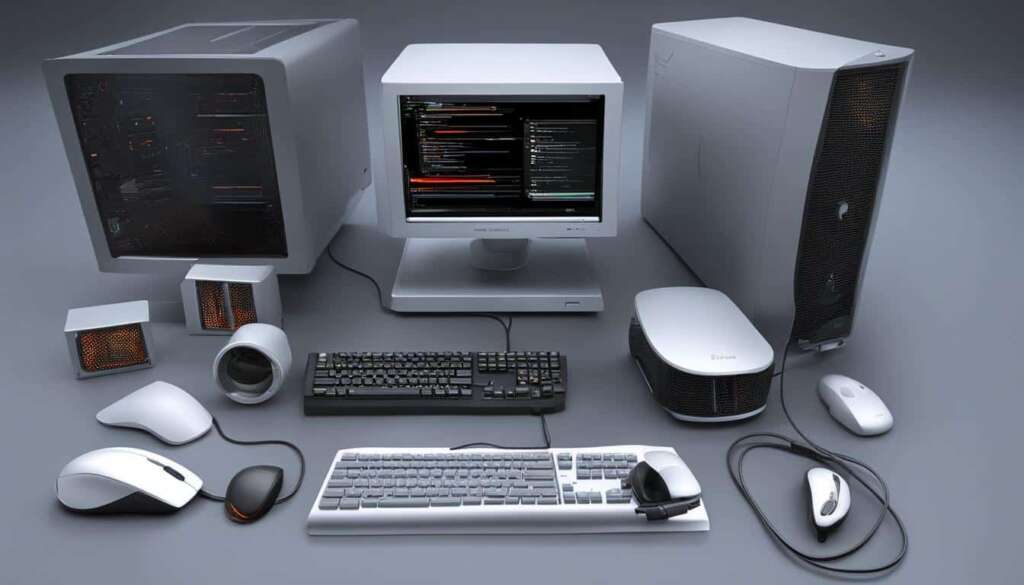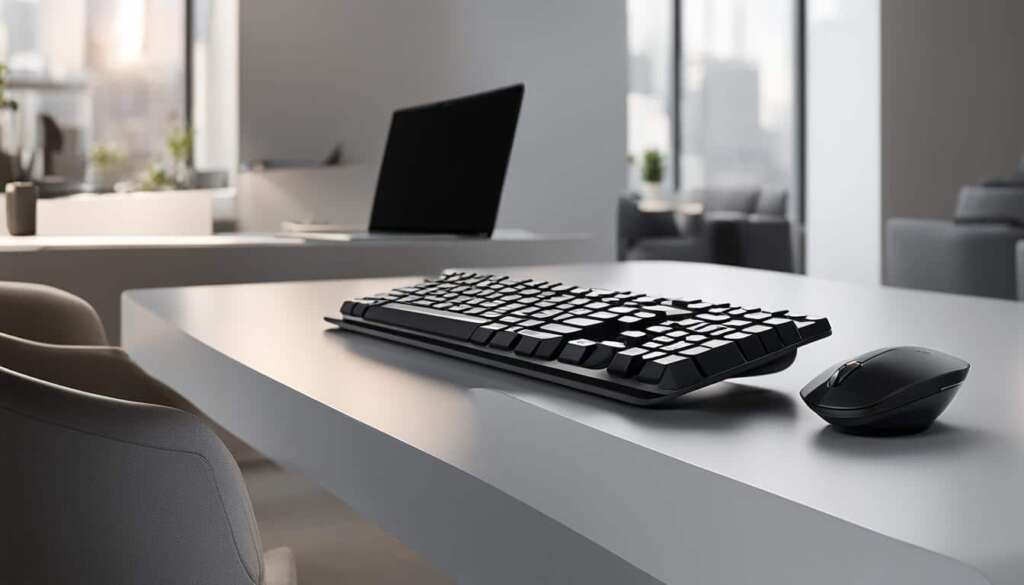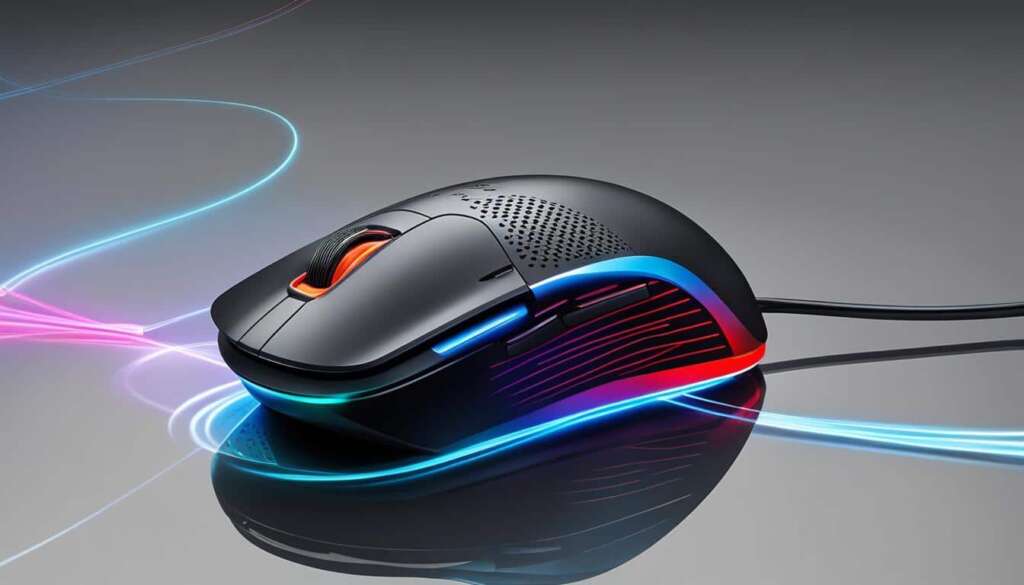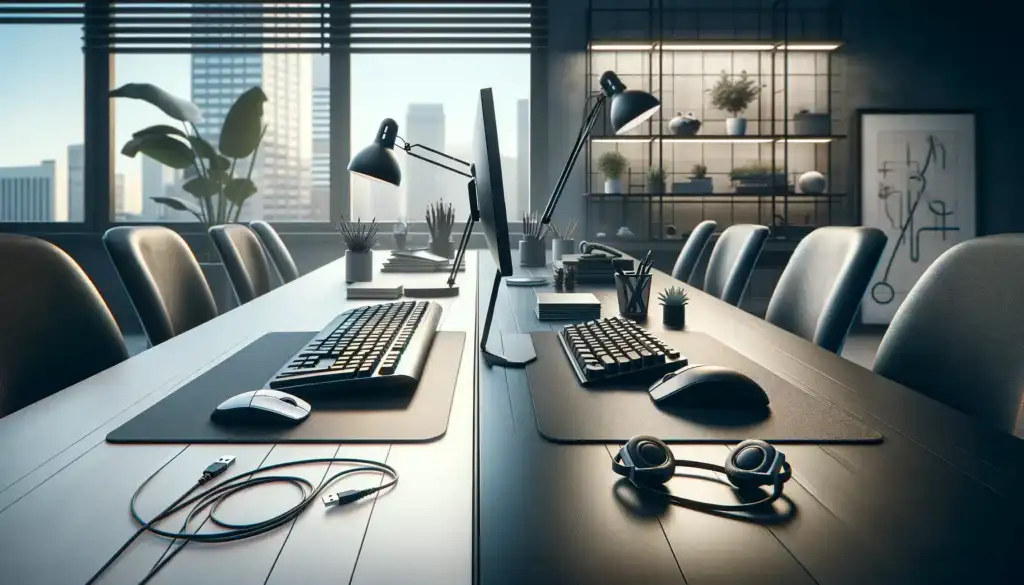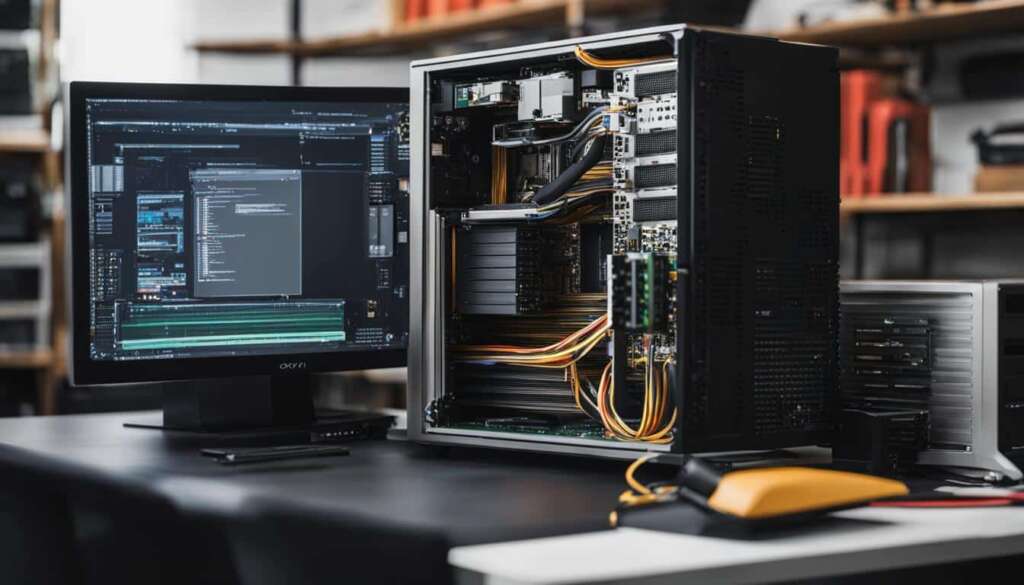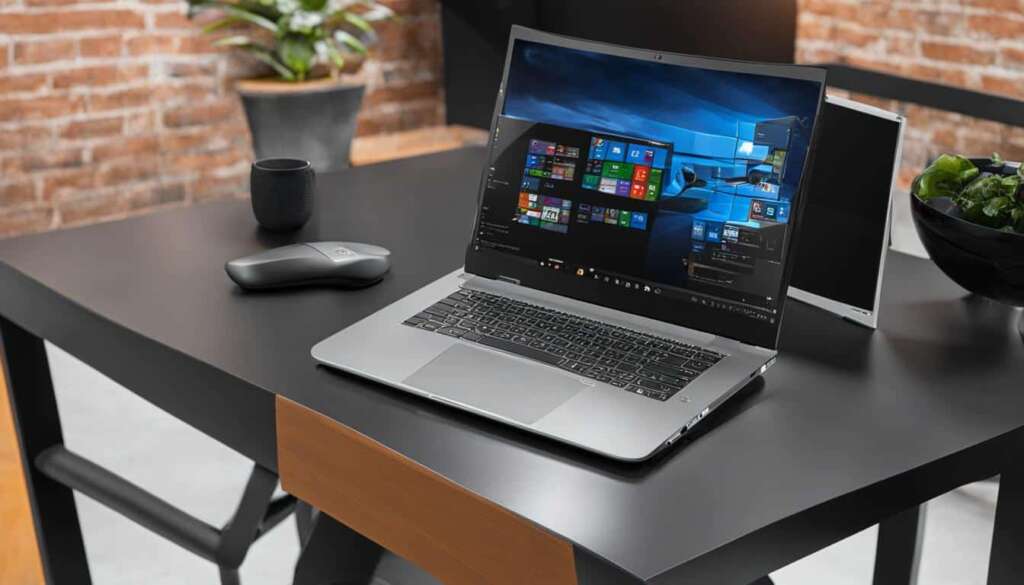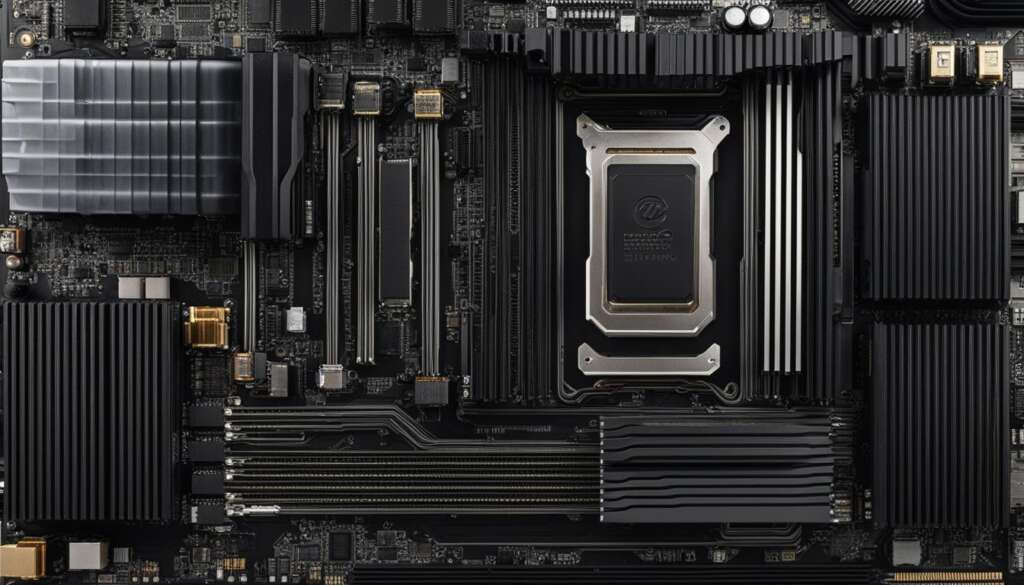Table of Contents
Are you curious about the world of computers and want to understand the basics? Look no further! In this article, we will explore the fundamental aspects of personal computers (PCs) and unravel their mysteries. Whether you are a beginner or just looking to refresh your knowledge, this guide will provide you with a solid foundation in computer basics. So, let’s dive in and discover what exactly a PC is!
Key Takeaways
- A PC, short for personal computer, is an electronic device that manipulates and processes data.
- PCs are composed of both hardware and software components.
- Hardware components include the keyboard, mouse, and computer case.
- Software components include the operating system and various applications.
- PCs come in different types, such as desktops, laptops, and tablets, each serving different purposes.
- Understanding PC hardware, like the motherboard, CPU, RAM, and storage drives, is essential for comprehending its functionality.
- Peripherals and expansion slots allow for customization and enhancement of a PC.
Types of Computers: Desktops, Laptops, and Tablets
Computers come in various shapes and sizes, each serving different functions and catering to different user needs. Understanding the different types of computers can help you make an informed decision when choosing the right one for yourself. The main types of computers are desktops, laptops, and tablets.
Desktop Computers
Desktop computers are the traditional form of personal computers and are commonly used in work, home, and school settings. These computers are designed to be placed on a desk and consist of separate components such as a computer case, monitor, keyboard, and mouse. Desktop computers are typically more powerful than laptops and offer greater customization options. They are preferred by users who require high-performance capabilities and need a larger display for tasks like video editing, gaming, or graphic design.
Laptop Computers
Laptop computers, also known as notebooks, are portable and battery-powered devices that can be used anywhere. These computers have a built-in monitor, keyboard, and touchpad, all designed to fit into a compact and lightweight form factor. Laptops are popular among users who need mobility and flexibility. They are ideal for students, business professionals, and individuals who frequently work on the go.
Tablet Computers
Tablet computers are even more portable than laptops and feature a touch-sensitive screen for typing and navigation. These devices are lightweight, slim, and easy to carry around. Tablets are designed for casual use, such as web browsing, media consumption, and playing games. They are often equipped with a wide range of apps and are popular among users who prioritize convenience and mobility. Tablets are also a popular choice for children and individuals who prefer a more user-friendly interface.
When choosing a computer, it’s important to consider your specific needs, preferences, and use cases. While desktop computers offer power and customization, laptops provide mobility and convenience, and tablets prioritize portability and ease of use. By understanding the different types of computers, you can make an informed decision and find the perfect device to meet your requirements.
PC Components: Understanding Hardware and Software
A personal computer (PC) is made up of both hardware and software components. Understanding these components is crucial to grasp how a computer functions.
Let’s start with the hardware. PC hardware refers to the physical parts of a computer that you can see and touch. These include the computer case, motherboard, power supply, central processing unit (CPU), random-access memory (RAM), storage drives, cooling devices, and cables. Each component plays a specific role in the computer’s overall performance. For example, the motherboard is the main circuit board that connects all the components together, while the CPU is the “brain” of the computer, responsible for executing instructions and performing calculations.
On the other hand, PC software consists of instructions that tell the hardware what to do. The operating system (OS) is the most important software component as it controls all the functions of the computer. Examples of popular operating systems include Microsoft Windows, Apple macOS, and Linux. Additionally, software includes programs for word processing, presentations, web browsing, email, and productivity tools. These programs allow users to interact with the hardware and perform various tasks.
To summarize, PCs are composed of hardware and software components. Hardware refers to the physical parts of the computer, such as the motherboard and CPU, while software consists of instructions that enable the hardware to function. Understanding these components is essential for anyone looking to delve into the world of PCs.
Understanding PC Hardware: Motherboard, CPU, RAM, and Storage Drives
When it comes to PC hardware, there are several key components that play a crucial role in the overall performance and functionality of a computer. These components include the motherboard, CPU, RAM, and storage drives. Understanding how these pieces work together can help you make informed decisions when it comes to upgrading or building your own PC.
The Motherboard: The Backbone of Your PC
The motherboard is often referred to as the “backbone” of a PC because it connects and provides power to all the other components. It acts as a central hub, facilitating communication between the different parts of the computer. The motherboard comes in various sizes and standards, such as ATX and MicroATX, and houses the CPU, RAM slots, expansion slots, and connectors for peripherals and storage drives.
The CPU: The Brain of Your PC
The CPU, or central processing unit, is often referred to as the “brain” of the PC. It carries out the majority of the computer’s processing tasks, performing calculations and executing instructions. The CPU’s performance is determined by its clock speed, the number of cores it has, and its architecture. A higher clock speed and more cores generally result in better performance and multitasking capabilities.
RAM: Temporary Storage for Data
RAM, or random-access memory, serves as temporary storage for data that the CPU needs to access quickly. It allows the computer to run programs smoothly and efficiently. The more RAM your PC has, the better its performance will be, especially when running multiple applications simultaneously. RAM comes in different capacities, such as 4GB, 8GB, or 16GB, and can be upgraded depending on your needs.
Storage Drives: Storing and Accessing Data
Storage drives are responsible for storing and accessing data on your PC. There are two main types of storage drives: hard disk drives (HDD) and solid-state drives (SSD). HDDs are traditional mechanical drives that store data on spinning disks, while SSDs use flash memory and have no moving parts. SSDs are generally faster and more reliable than HDDs, but they are also more expensive per gigabyte of storage. Many users opt for a combination of both, with an SSD for the operating system and frequently used applications, and an HDD for larger files and storage.
| Component | Description |
|---|---|
| Motherboard | Connects and provides power to all the components in the PC. |
| CPU | Performs calculations and executes instructions, acting as the brain of the PC. |
| RAM | Serves as temporary storage for data that the CPU needs to access quickly. |
| Storage Drives | Store and access data on the PC, with options including HDDs and SSDs. |
Understanding the key PC hardware components – motherboard, CPU, RAM, and storage drives – is essential for anyone looking to build or upgrade a computer. Each component plays a crucial role in the overall functionality and performance of the PC. By having a clear understanding of how these components work together, you can make informed decisions when it comes to optimizing your PC for your specific needs.
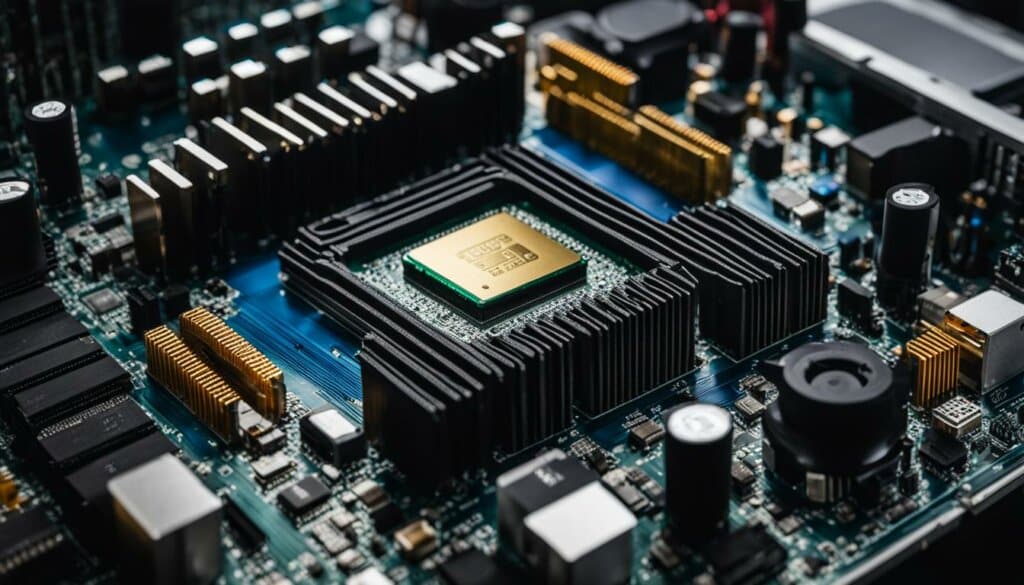
PC Software: Operating Systems and Applications
The software on a PC plays a crucial role in its functionality and the tasks it can perform. The two key components of PC software are the operating system and applications. Let’s explore them in detail.
Operating Systems
The operating system (OS) is the foundation of a PC’s software. It manages the computer’s hardware and provides a user-friendly interface for users to interact with the system. The most popular operating systems for PCs are Microsoft Windows, Apple macOS, and Linux.
Each operating system has its own features, interface, and compatibility with different software and hardware. Windows is widely used in both personal and professional environments, offering a range of productivity tools and software compatibility. macOS is known for its sleek design and seamless integration with other Apple devices. Linux is an open-source operating system that offers flexibility, customization, and strong security features.
Applications
Applications, also known as programs, are software tools that perform specific tasks on a PC. They enable users to perform a wide range of activities, such as word processing, web browsing, email communication, multimedia editing, and gaming.
The choice of applications available for PCs is extensive, covering various categories such as productivity tools, creative software, entertainment apps, and more. Some popular applications include Microsoft Office Suite (Word, Excel, PowerPoint), Adobe Creative Cloud (Photoshop, Illustrator, Premiere Pro), web browsers like Google Chrome and Mozilla Firefox, and communication tools like Skype and Slack.
| Operating System | Main Features | Popular Applications |
|---|---|---|
| Windows | – User-friendly interface – Wide software compatibility – Extensive range of productivity tools |
– Microsoft Office Suite – Adobe Creative Cloud – Google Chrome |
| macOS | – Sleek design – Seamless integration with Apple devices – Powerful multimedia capabilities |
– iWork Suite – Final Cut Pro X – Safari |
| Linux | – Flexible and customizable – Strong security features – Large open-source software community |
– LibreOffice – GIMP – Mozilla Firefox |
Each operating system provides its own set of applications, and users can choose the ones that best suit their needs and preferences. Whether it’s creating documents, editing photos, or exploring the web, applications enhance the functionality of a PC and enable users to accomplish various tasks effectively.
In the next section, we will delve deeper into different types of PCs – desktops, laptops, and more – to understand their unique features and use cases.
Different Types of PCs: Desktops and Laptops
When it comes to PCs, there are two main types that dominate the market: desktop computers and laptops. Each type offers its own set of advantages and caters to different user needs. Let’s explore the characteristics of these two types in more detail.
Desktop Computers
Desktop computers are the traditional form of PCs that are designed to be stationary and placed on a desk. They typically consist of a computer case, monitor, keyboard, and mouse. One of the main advantages of desktops is their power and performance. They often have more processing power, storage capacity, and expansion options compared to laptops. This makes them ideal for tasks that require heavy computing power, such as video editing, gaming, and graphic design.
Another benefit of desktop computers is their customization options. Users can easily upgrade components like the CPU, RAM, and storage drives to enhance performance or meet specific requirements. Additionally, desktops are often more affordable than laptops with similar specifications, making them a cost-effective choice for users on a budget.
Laptop Computers
Laptop computers, also known as notebooks, are designed for portability and convenience. They are compact and lightweight, allowing users to carry them around and use them anywhere. Laptops come with a built-in monitor, keyboard, and touchpad, eliminating the need for external peripherals. This makes them an excellent choice for users who are frequently on the go or need a mobile computing solution.
While laptops may not offer the same level of power and customization options as desktops, they still provide sufficient performance for most everyday tasks. They are suitable for activities like web browsing, email, document editing, and multimedia consumption. Laptops also have built-in rechargeable batteries, allowing users to work or entertain themselves without being tethered to a power outlet.
| Factors | Desktop Computers | Laptop Computers |
|---|---|---|
| Portability | Not portable; stationary | Highly portable; can be used anywhere |
| Power and Performance | High; suitable for heavy computing tasks | Lower than desktops, but sufficient for everyday tasks |
| Customization Options | High; easy to upgrade components | Limited; components are often integrated |
| Cost | Often more affordable for similar specifications | Generally more expensive |
Ultimately, the choice between a desktop computer and a laptop depends on individual preferences and specific use cases. Desktops are well-suited for users who require high performance and customization options, while laptops offer the advantage of portability and convenience. With advancements in technology, laptops are closing the performance gap with desktops, making them a viable option for a wide range of users.
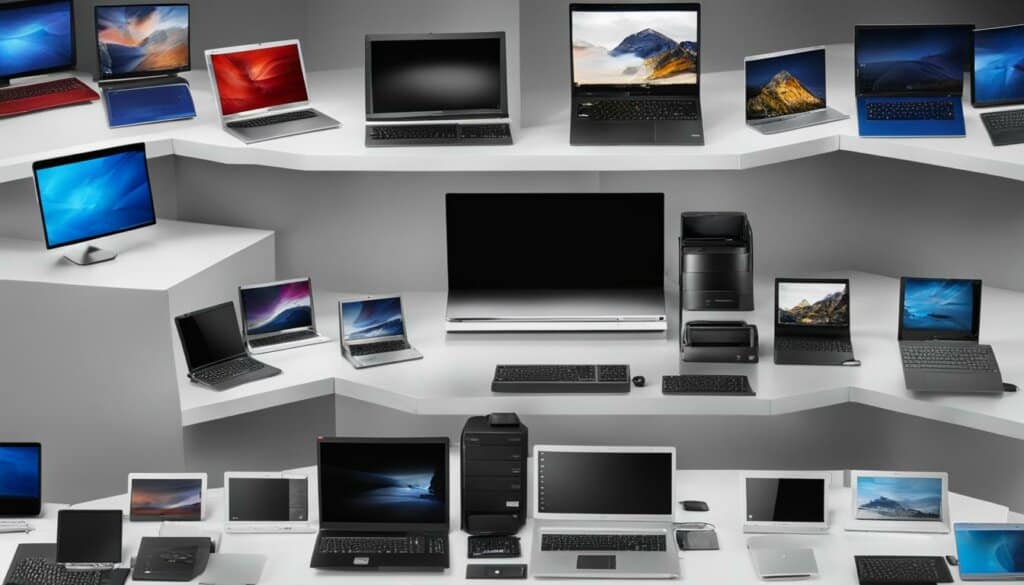
PC Peripherals and Expansion Slots
When it comes to personal computers, peripherals play a crucial role in enhancing the user experience. These external devices allow us to interact with the computer and perform various tasks. Some common PC peripherals include printers, speakers, monitors, keyboards, and mice. Each peripheral serves a specific purpose and adds functionality to our PCs.
For instance, a printer enables us to print out important documents, while speakers provide audio output for multimedia content. Monitors display visuals, keyboards facilitate typing, and mice offer precise navigation. These peripherals can be connected to the PC via USB ports or wireless technology, depending on the device and compatibility.
In addition to peripherals, PCs also offer expansion slots that allow users to customize and upgrade their machines. Expansion slots provide the ability to add more components, such as graphics cards, sound cards, and additional storage drives. These slots enable users to enhance the performance and capabilities of their PCs according to their specific needs and preferences.
PC Peripherals
Here are some of the most commonly used PC peripherals:
- Printers: Printers allow us to transfer digital files onto physical paper, making them essential for offices and homes alike.
- Speakers: External speakers enhance audio output, providing a richer and more immersive sound experience.
- Monitors: Monitors display visual content, allowing us to view and interact with various applications and media.
- Keyboards: Keyboards are used for typing and inputting commands into the PC, making them a vital peripheral for everyday use.
- Mice: Mice offer precise control and navigation, facilitating smooth movement across the screen and making tasks easier to accomplish.
Expansion Slots
Expansion slots on PCs provide the opportunity for customization and upgrading. Here are some commonly used expansion slots:
- PCIe (Peripheral Component Interconnect Express): PCIe slots are used to add high-speed components like graphics cards and solid-state drives.
- PCI (Peripheral Component Interconnect): PCI slots are utilized for adding sound cards, network cards, and other expansion cards.
- M.2: M.2 slots are commonly used to add solid-state drives, allowing for faster data transfer and improved system performance.
- RAM Slots: RAM slots enable users to upgrade their computer’s memory, allowing for faster and more efficient multitasking.
By utilizing both peripherals and expansion slots, users can personalize their PCs to suit their specific needs, whether it be for work, entertainment, or gaming purposes. These additional components offer flexibility, improved performance, and enhanced usability, ensuring that users can get the most out of their personal computers.

Conclusion
In conclusion, a PC is an electronic device that manipulates and processes data, allowing users to perform various tasks such as typing documents, browsing the web, and playing games. PCs come in different types, including desktops, laptops, and tablets, each with its own advantages and use cases.
They are comprised of hardware components like the motherboard, CPU, RAM, and storage drives, as well as software components like the operating system and applications. PCs can be customized with peripherals and expanded with additional components through expansion slots.
Overall, PCs play a vital role in our daily lives, providing us with the ability to connect, create, and accomplish tasks efficiently. With a variety of PC functions, operating systems, and computer terms, there is a wide range of options and possibilities to explore in the world of personal computing.
FAQ
What is a PC?
A PC, or personal computer, is an electronic device that manipulates and processes data. It has the ability to store, retrieve, and process information.
What are the different types of computers?
The different types of computers include desktops, laptops, and tablets.
What are the main components of a PC?
The main components of a PC are hardware and software. Hardware includes physical parts such as the motherboard, CPU, RAM, and storage drives, while software consists of the operating system and applications.
What is the role of the motherboard?
The motherboard is the primary circuit board inside a PC that connects all the components together.
What is an operating system?
An operating system is a crucial software component of a PC that manages the hardware and software.
What are desktop computers used for?
Desktop computers are commonly used in offices and homes for tasks such as typing documents, browsing the web, and playing games.
What are peripherals and expansion slots?
Peripherals are devices such as printers, speakers, monitors, keyboards, and mice that allow users to interact with the computer. Expansion slots provide the ability to add more components to the PC, such as graphics cards and additional storage drives.

